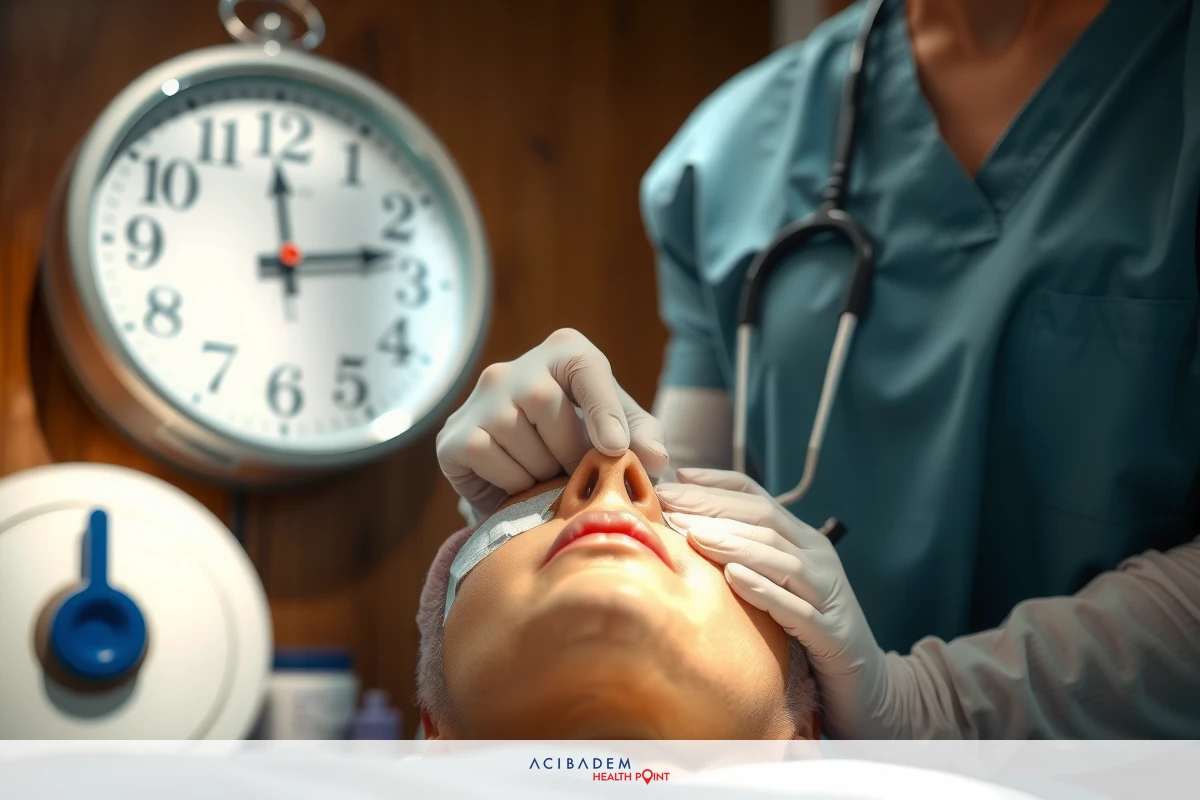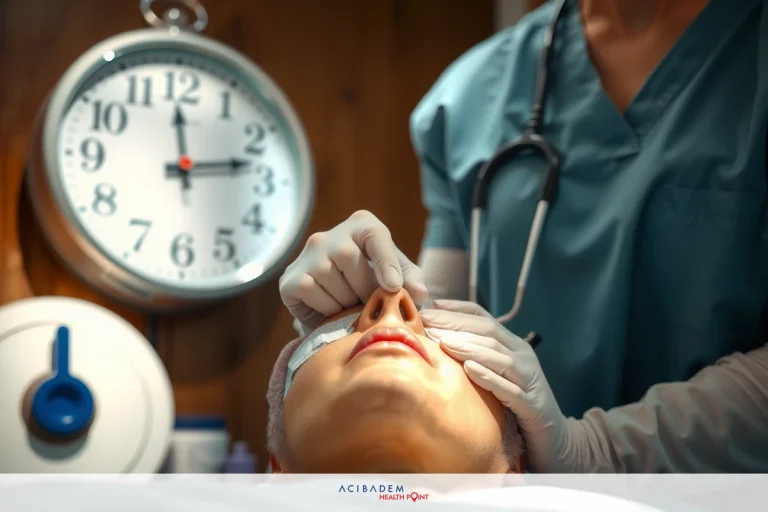How to Remove Tape from Nose After Rhinoplasty
How to Remove Tape from Nose After Rhinoplasty Rhinoplasty, or nose reshaping surgery, often requires the use of surgical tape for support and to minimize swelling in the immediate post-operative period. The removal of this tape can be a cause for anxiety, but with a gentle approach and proper technique, it doesn’t have to be a daunting task.
The tape serves an important purpose by applying pressure and reducing inflammation. It’s crucial that patients understand how to safely remove it to avoid disrupting the healing process. This article will guide you through the process of preparing for tape removal, the correct method of gently peeling off the tape, and the steps to clean and moisturize your nose afterward. The information provided can assist you in navigating this crucial stage of rhinoplasty aftercare.
Preparing for Tape Removal
Before you start the process of removing the tape from your nose after rhinoplasty, it’s important to prepare adequately. Preparation is key in ensuring that the removal process goes smoothly, minimizing discomfort and potential harm to your nose. First, ensure your hands are thoroughly clean. Washing with soap and warm water will help prevent any transfer of bacteria to the sensitive skin on your nose.
Secondly, gather all the necessary supplies. You’ll need a mirror to see what you’re doing clearly, a warm, damp cloth or sponge, and a gentle skin cleanser. Having these items at hand will make the process easier and more efficient. Remember to select a calm and quiet environment where you can concentrate without interruptions.
One crucial aspect of preparation is timing. Your doctor should provide guidance on when exactly to remove the tape. It’s generally not recommended to remove the tape immediately after surgery, as this could affect your nose’s healing process. Instead, it would be better to wait until your doctor gives you the go-ahead. This timeline can vary depending on individual cases and the specifics of the rhinoplasty procedure performed.
Finally, mentally preparing yourself can also be beneficial. Understand that tape removal might cause slight discomfort but should not be overly painful. Maintaining a level of patience and gentleness during this process will be essential in ensuring a
successful tape removal aftercare routine.
Knowing what to expect and how to prepare can make this part of your rhinoplasty aftercare less intimidating. Proper preparation can not only protect your new nasal structure but also promote healing and recovery after your surgery.
Gently Peeling off the Tape
Now that you’re fully prepared, it’s time to begin the process of gently peeling off the tape from your nose. Start by softening the adhesive on the tape. This can be done by applying a warm, damp cloth or sponge to the area for a few minutes. The warmth and moisture will help loosen the adhesive, making the tape easier to remove without causing any discomfort or damage.
Once the tape is softened, gently start peeling it from one end. Always remember to pull the tape in the direction of hair growth, not against it. This reduces the risk of causing any unnecessary pain or discomfort. If you encounter any resistance or pain during removal, stop and apply more warmth to further loosen the adhesive.
Peeling off the tape should be a slow and careful process. Rushing through could potentially result in skin irritation or even damage to your new nasal structure. Remember, it’s not a race; taking your time will ensure a

safer and more comfortable experience. Be gentle and patient with yourself throughout this process.
After successfully removing all the tape, there might be some residual adhesive left on your skin. You can use a gentle cleanser to wash this off, taking care not to scrub too hard as this could irritate your skin. Rinse thoroughly and pat dry with a clean towel.
It’s important to note that everyone’s experience with tape removal after rhinoplasty may differ slightly. Some people might find it relatively easy, while others may find it a bit challenging due to sensitivity or individual healing rates. However, by following these steps and maintaining gentleness and patience, you will be able to navigate this crucial part of your rhinoplasty aftercare effectively.
Cleaning and Moisturizing Your Nose
Once the tape has been successfully removed from your nose, it’s time to clean and moisturize the area. This is a crucial step in your aftercare process. Proper cleaning helps to remove any residual adhesive from the tape and prevents any potential skin infections, while moisturizing aids in maintaining skin health and promoting healing.
Start by selecting a gentle, fragrance-free cleanser. Harsh products can irritate your skin and interfere with the healing process after rhinoplasty. Rinse your nose with warm water, then apply the cleanser using your fingers in a circular motion. Be sure not to scrub or pull at your skin, which may be sensitive following tape removal. Rinse thoroughly with warm water and pat dry gently with a clean towel.
Now that your nose is clean, it’s time to moisturize. Just like with the cleanser, it’s important to choose a gentle, fragrance-free moisturizer. Apply a small amount to your fingertips and gently massage it into your skin, taking care to avoid any incision areas or stitches. The moisturizer will help soothe any irritation from the tape removal process and prevent dryness.
It’s essential to maintain this cleaning and moisturizing routine regularly as part of your rhinoplasty aftercare. This not only promotes healing but also minimizes discomfort during the recovery period. Furthermore, keep in mind that everyone’s skin reacts differently, so don’t be discouraged if you experience some redness or mild discomfort initially. These symptoms should subside over time.
By completing these steps meticulously, you are ensuring the best possible care for your nose post-rhinoplasty. Remember that patience and consistency are key here; it might take some time before you see the full results of your procedure, but following an effective aftercare routine can greatly enhance your recovery process.
Frequently Asked Questions
When can I remove the tape from my nose after rhinoplasty?
The timing for tape removal varies depending on your individual case and the specific instructions provided by your surgeon. Typically, it is recommended to wait until your doctor gives you the go-ahead to remove the tape. This is usually around one to two weeks after your rhinoplasty surgery.
Will removing the tape be painful?
Removing the tape should not be overly painful. However, you may experience some mild discomfort or sensitivity during the process. It's important to be gentle and patient while peeling off the tape to minimize any potential discomfort.
Can I moisturize my nose immediately after tape removal?
Yes, you can moisturize your nose after removing the tape. In fact, moisturizing is an essential step in post-tape removal care. Be sure to use a gentle, fragrance-free moisturizer and apply it with clean fingertips, avoiding any incision areas or stitches.
Is it normal to have redness or irritation after tape removal?
Some mild redness or irritation is normal after tape removal, especially if your skin is sensitive. However, these symptoms should subside over time as your skin continues to heal. If you experience severe pain, excessive swelling, or signs of infection, it's important to consult with your surgeon.
Can I resume my regular skincare routine after removing the tape?
It is best to consult with your surgeon before resuming your regular skincare routine after tape removal. Your surgeon will be able to provide personalized advice based on your specific healing progress and any additional skincare recommendations they may have for you.











